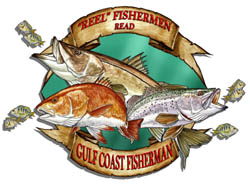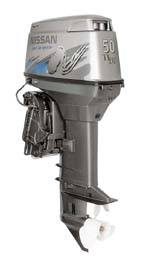
The Saltwater Magazine for Gulf Coast Fishing!
FISHING FORECASTS | FISHING CALENDARS | ARTICLES | SUBSCRIBE
Search Gulf Coast
Fisherman's Web Site
Past articles,
specific places or fish, etc.


More Boating Info:
o
Hustler Props
o Flats Boat Buyer's Tips
o Cell Amplifiers
o Tips for Running
\a Flats Boat
o
Skeeter Boats
o
PowerTran Jackplates
Going Skinny With
Flats Boats
by Robert Sloan
![]()
| CURRENT
MOON lunar phases |
GULF COAST
FISHERMAN T-Shirts
GCF T's are here!
An Impossible Dream
Fishing Four States in One Day
by Al Rogers

- The magic of skimming over a gin clear shallow water flat along the Gulf Coast is an experience you have to see and feel to believe, and the reason most anglers have not experienced such a deal is because they don't have access to a boat that can go that shallow.
But if you know where to look there is no shortage of boats that can skim over the top of water that's no more several inches deep. One such place is the lower Texas coast. That's where anglers over the years have developed flats boats that can just about be launched and run in a mud puddle.
I'm talking about boats in the 10 to 15 foot range, that are powered with small outboards in the 25 to 50 horsepower range. What makes these rigs so popular along the middle and lower Texas coast is that they can be used to reach out of the way places that are seldom fished. If you think about it, that's every anglers dream.
Four specific boat companies are very popular along the lower Texas coast. They are the Shallow Sport Company, Shoalwater Boats, Mowdy Boats and Marine Service, manufacturer of Flatlander Boats. Each of those companies makes a specific type of boat that is under 15-feet long and is capable of skimming across some of the shallowest back water flats you can find.
I'm a boat fanatic. I've owned lots of them. My fascination with boats is never ending. So putting this story together has been a hoot.
When selecting a short, shallow running flats boat you'll quickly find that there are many options. For example, do you want a tunnel hull, a flat bottom, v-bottom or catamaran hull? What horsepower engine will you need? How about trim tabs? Do you want a raised deck? How about polling and casting platforms? What about a jack plate? There are always various types of consoles to choose from.
And of course you'll need a trailer.
Weight is a definite factor to consider. Some boats are much heavier than others. The combination of hull weight and motor weight is definitely worth checking out. Why? Because the lighter the boat, the quicker it'll get up on plane.
A heavy boat will bog down and have a slow hole shot. The big factor with weight is polling a boat. That's how many "skinny" water anglers prefer to fish the flats. Moving a boat over inches of water with a push pole is one of the most deadly ways of spotting and catching trout and reds. It's how Bud Rowland caught the Texas state and world record speckled trout on a fly rod. He was polling along on the lower Laguna Madre when he saw and caught the heaviest trout ever landed in Texas.
You don't want to try and pole a heavy boat on the flats. It'll wear you out. For a 15-foot boat you want the weight to be under 750 pounds. That's actually too heavy. The hull weight of the Chiquita is 650 pounds; the Shoalwater 14.5 comes in at 550, and the 15-foot Shallow Sport is right at 750 pounds. Those weights are from the builders.
Serious anglers have taken boat weight to extremes. For example you can buy a 15-foot Maverick Mirage HPX boat weighing 300 pounds. Or there's the Mitzi Skiff 15 that weighs 410. Another option is the 14.8 Hell's Bay Devilray skiff weighing 260 pounds.
Generally the less a boat hull weighs, the more it'll cost. It's all about the material that the hull is made of, and the process of putting it together.
For example the Maverick Mirage HPX hull is put together with a vacuum assisted resin infusion system. That hull is made of a Kevlar/carbon fiber laminate.
Cost is just over $20,000 for boat, motor and trailer. Cost for a 14.6-foot Chiquita and same size Shoalwater, including boat, motor and trailer is considerably less..
If you're serious about polling the flats, fork out the money and go lightweight. If not, go with one of the heavier hulls.
As far as poling goes, you'll get the best performance out of a v-hull (Mirage) or the Shoalwater catamaran hull skiff. The flat-bottomed boats don't generally move in a straight path.
Forrest Canion owns and operates Marine Service out of Port Lavaca, Texas. One of his newest boats is called a Chiquita. It's 14-feet, 6-inches long with a beam of 7 feet. It's a great looking little rig that's built with a tunnel that's 5-feet long and 7-inches tall.
"It's a boat that'll get up in 11 inches of water on a hard bottom," says Canion. "With a soft bottom, it'll get up shallower."
That's pretty much the way the Shoalwater and Shallowsport hulls work as well.
The Shoalwater 14.5 is unique in that it's built on two foam filled stringers. The compact Mowdy scooter has redefined small flats boats. My Wilderness Systems 140 Tarpon kayak is longer than that boat. The 10-foot Mowdy, made in Victoria, Texas, weighs 450 pounds and is built to handle a 25 to 30 horsepower outboard. This rig will take you just about anywhere on the flats. The catch is that it's not a pleasant experience if you have to cross a choppy bay. This is the perfect boat for one person. But it functions with two people aboard, as well. It sells for about $4,350 with a trailer, motor not included.
The most unique thing about these compact flats boats is that they are built to run with 25 to 50 horsepower outboards that won't cost you an arm and leg. It's also a big deal with fuel costs so high. You can go a long way on six gallons of gas.
You have the option of outfitting these boats with a trolling motor. My advice is to learn how to pole. These boats are designed for fishing shallow. That's where a good pole will put you on fish that would likely spook from a trolling motor.
Each of these boats can be rigged with a polling tower or platform. They are also built for bow casting platforms.
You can plan on spending around $600 to $1,000 for a good lightweight poling platform. Don't get the cheapest platform you can find. Platforms made with skinny tubing will wobble. That is definitely not a good thing.
Oh yeah, don't forget a push pole. Like boat hulls, a lightweight push pole is mandatory. I've used an 18-foot G-Loomis graphite push pole for years. Cost for that type of lightweight pole is around $500.
A casting platform will cost from $350 to $500. If you're a fly fisherman get one with mesh netting to keep your line under control.
The great thing about these little boats is that they will last forever. Once you get them rigged out you'll be surprised at how much fun they can be.
My last bit of advice is to always test drive a boat before buying it. They all float and run differently. To make sure you get what you're looking for put it on the water before handing over a check.
For additional information contact:
· Marine Service - 361-552-4975; www.flatlanderboats.com
· Shoalwater Boats - 512-268-0326; www.shoalwaterboats.com
· Mowdy boats - 361-578-0551; www.mowdyboats.com
· Shallow Sport Boats - 956-233-9489; www.shallowsportboats.com
· Maverick Boats - 888-shallow; www.maverickboats.com.
POWERING UP
 When considering how to power a "little boat",
engines in the 25-50 hp range provide plenty of pushing power without breaking
the bank. Several outboards in this range also offer 4 stroke engines but
weight issues make 2-stroke engines a better choice.
When considering how to power a "little boat",
engines in the 25-50 hp range provide plenty of pushing power without breaking
the bank. Several outboards in this range also offer 4 stroke engines but
weight issues make 2-stroke engines a better choice.
Non-carbureted engines, such as the Nissan 50 TLDI (two-stroke, low pressure, direct injection) share many of the benefits of a four-stroke engine but have some advantages such as better performance and less fuel consumption while trolling or cruising.
Both 4-stroke and 2-stroke TLDI engines, however, offer significant advantages over carbureted 2-strokes. Besides a major reduction in fuel consumption, TLDI technology eliminates the need for a choke and gives quick starts in all weather conditions. There is also no need to premix oil and gas. A high quality TCW-III two-stroke engine oil is added to a reservoir under the cowling. Should you ever, heaven forbid, run it dry the engine will sound an alarm to wake you up.
Idle settings are user adjustable by pressing the key switch for variable trolling speeds. The key switch also acts as the user interface for checking information stored in the engine's electronic control unit (ECU) such as the engines "health" and hours of operation.
The Nissan 50 TLDI is extremely smooth and quiet at idle and is virtually smokeless in its operation. Its sound is unlike any outboard you've heard due in part to the subtle tone of an air compressor under the bonnet that is providing the low pressure injection. Under full throttle it still delivers quiet and responsive power. Although TLDI is new to boaters, Nissan has tested this technology for over 6 years. They are confident enough with their technology that these engines come with a 4 year warranty.
For more info on TLDI technology visit www.nissanmarine.com
